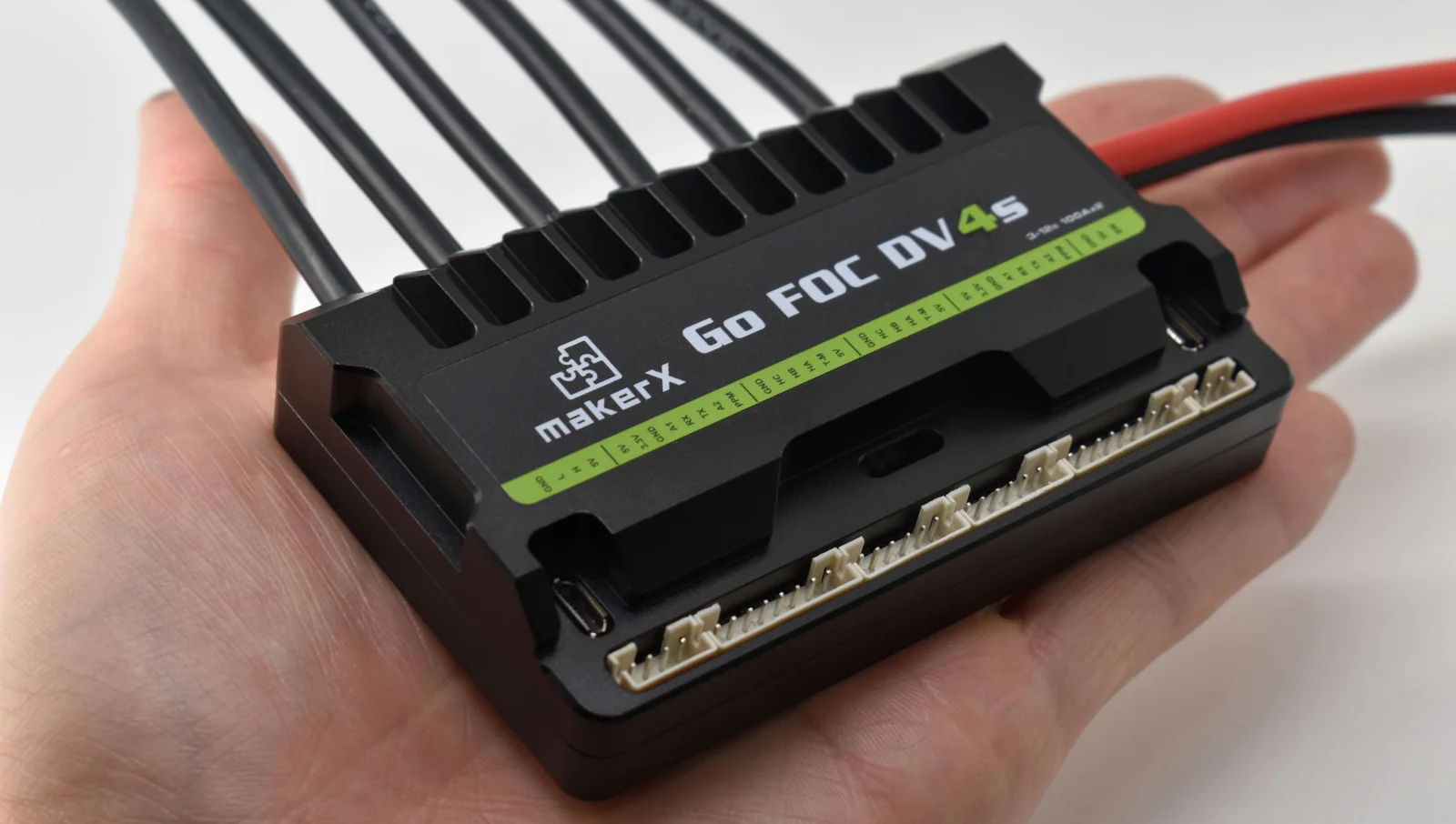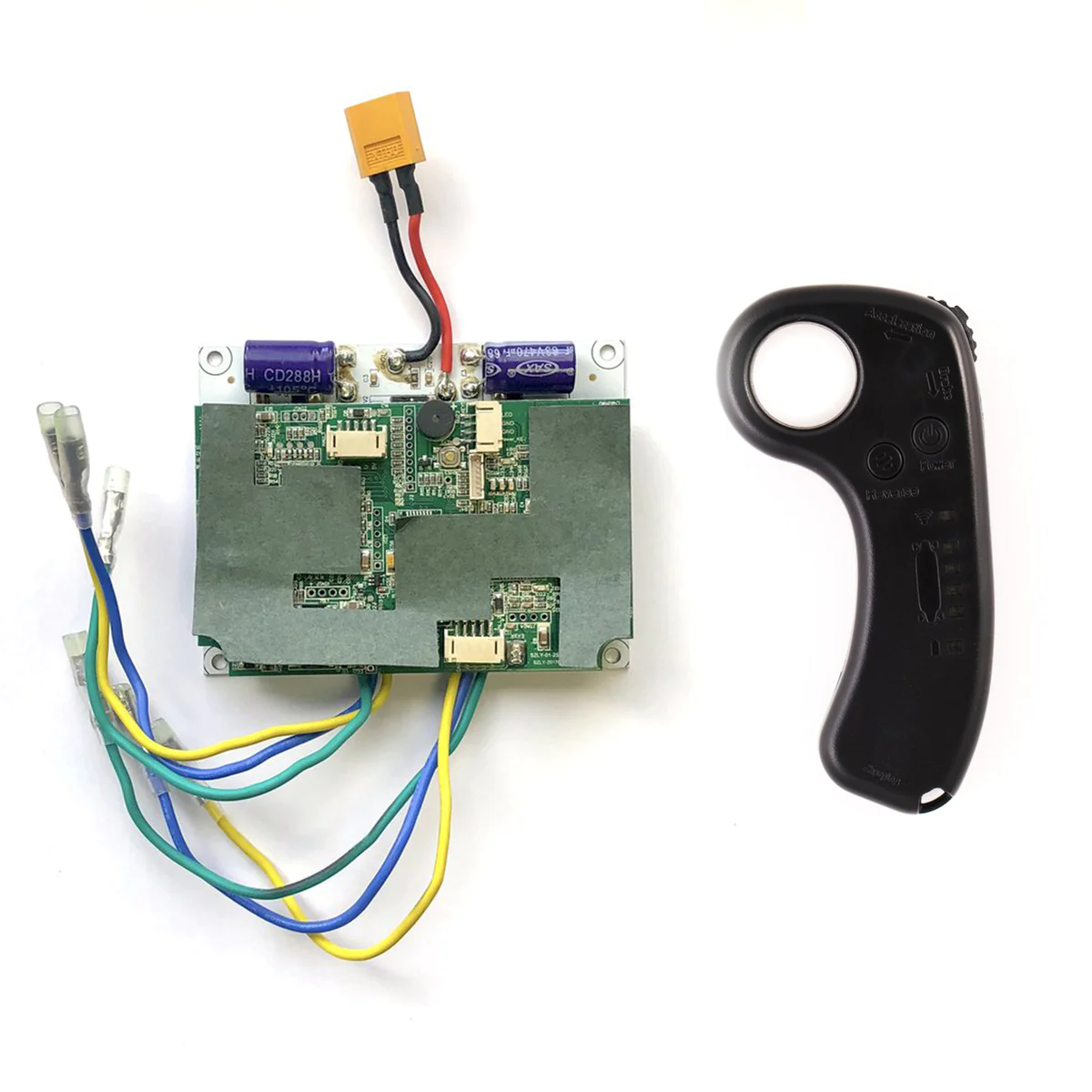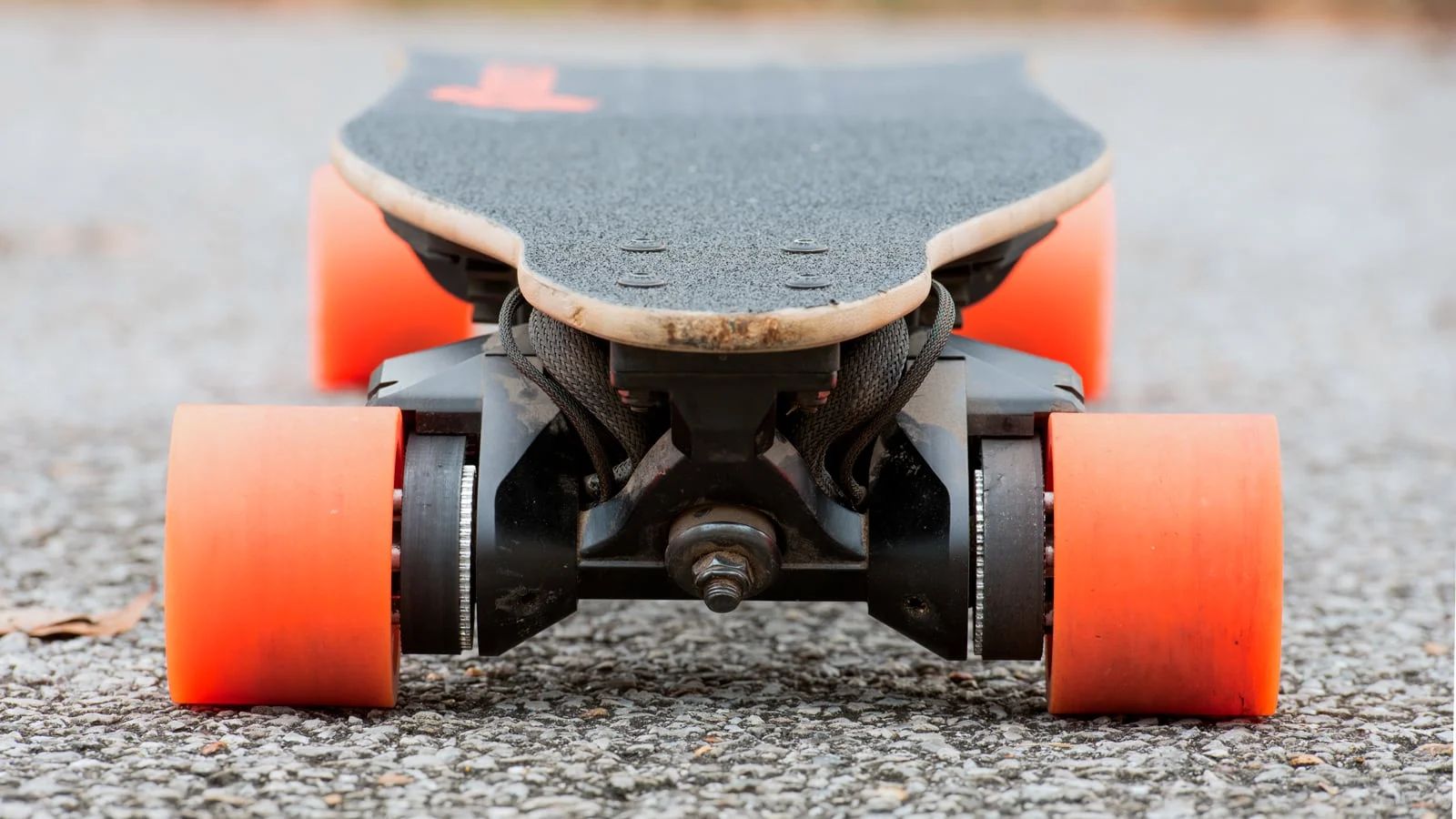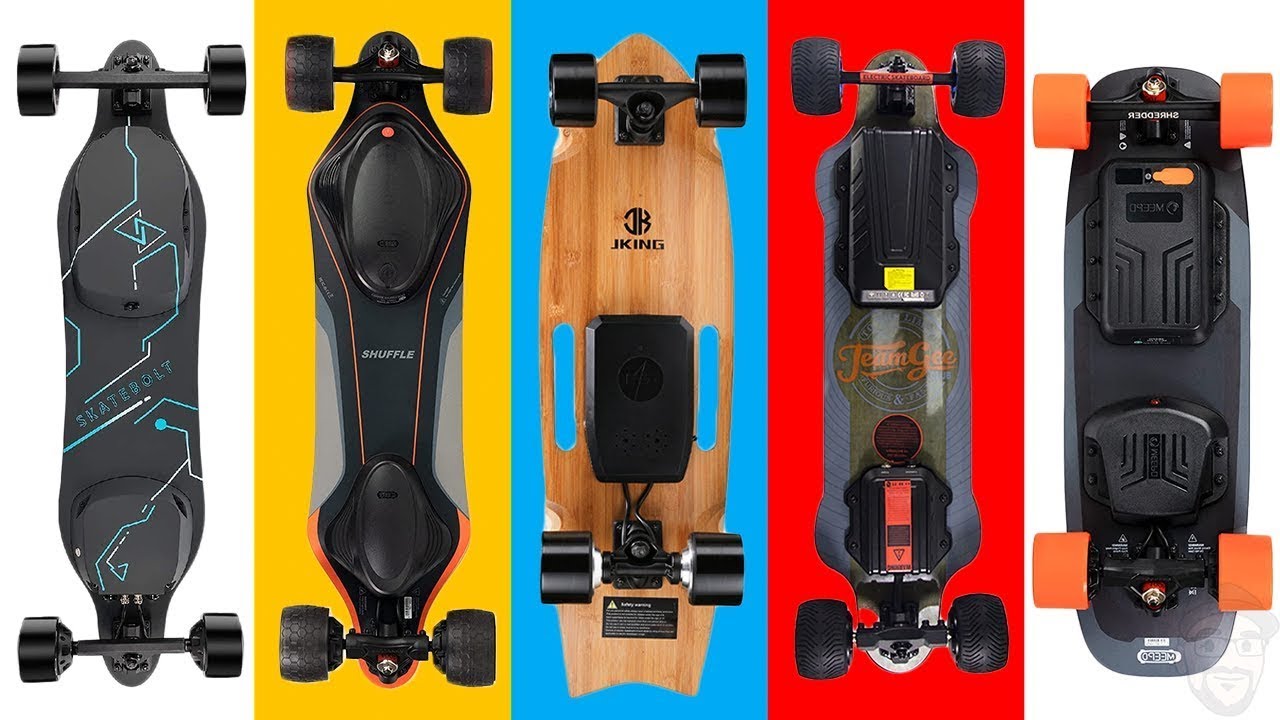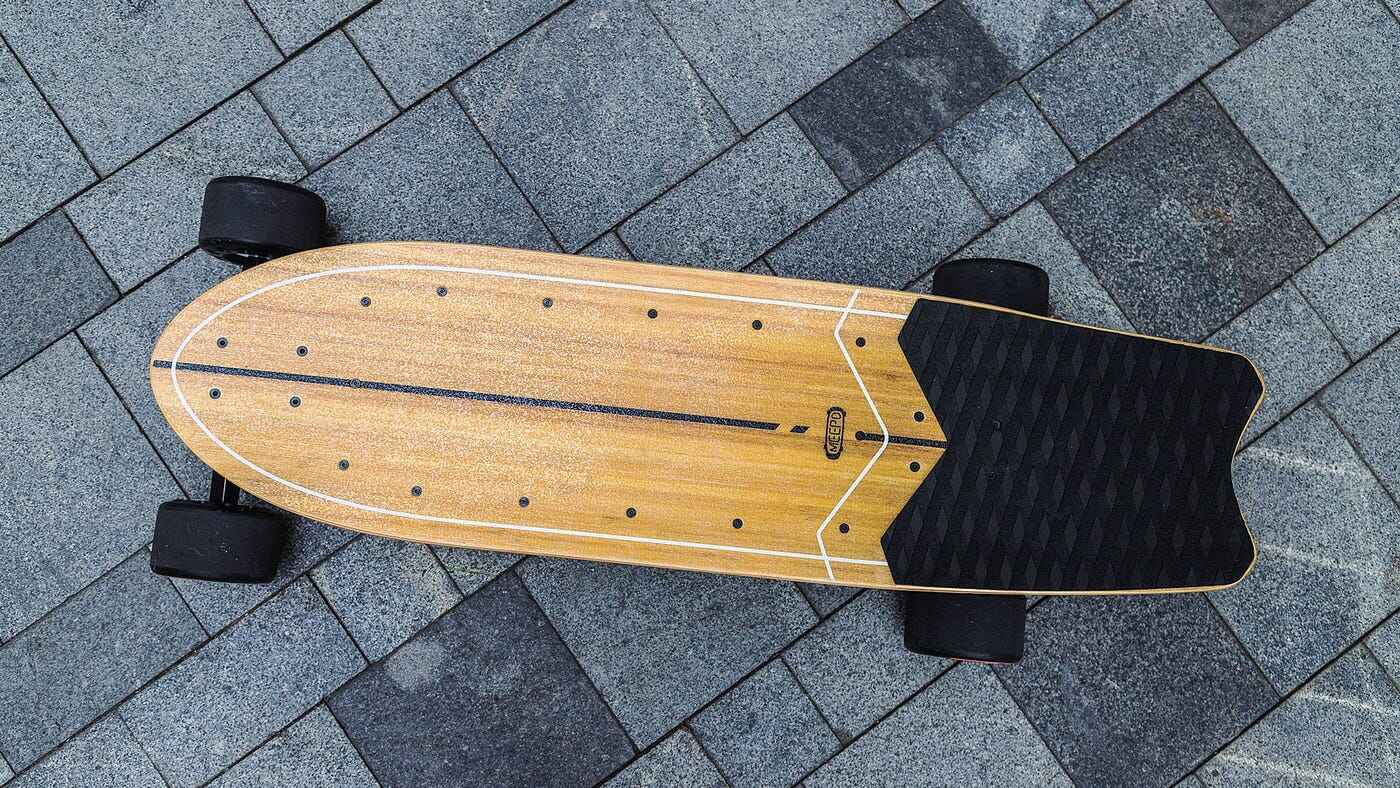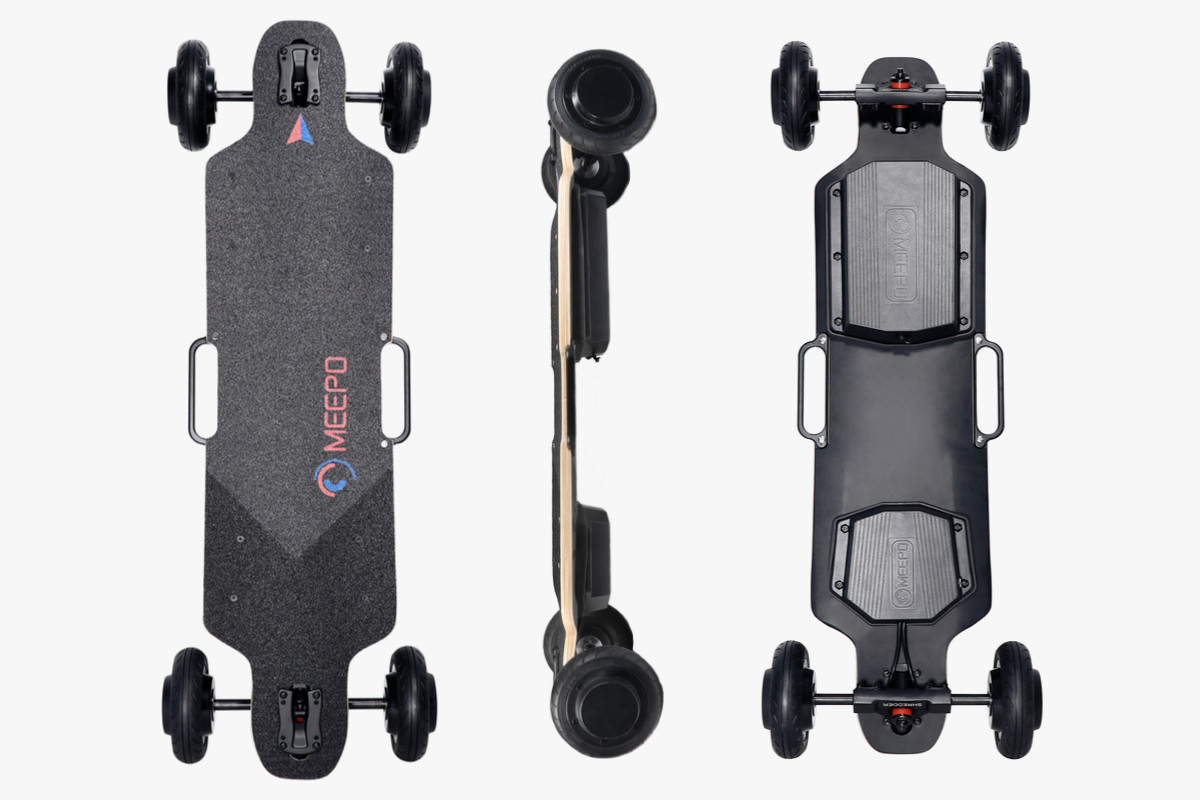Introduction
Welcome to the exciting world of electric skateboarding! As the popularity of electric skateboards continues to soar, more and more riders are seeking ways to enhance their ride and improve their overall experience. One critical component that plays a significant role in the performance and functionality of electric skateboards is the VESC (Vedder Electronic Speed Controller).
Whether you’re a seasoned rider or new to the electric skateboard scene, understanding what a VESC is and how it works is essential. This article will delve into the world of VESCs and provide you with valuable insights into their functionality, benefits, and how to select and install the right VESC for your electric skateboard.
So, what exactly is a VESC? In simple terms, the VESC is an electronic device that controls the speed and direction of an electric skateboard. Designed to replace traditional ESCs (Electronic Speed Controllers), VESCs offer advanced features and unparalleled performance.
Unlike regular ESCs, which use a pulse-width modulation (PWM) signal to control the speed of the motor, VESCs utilize a technique called Field-Oriented Control (FOC). This advanced control algorithm optimizes motor efficiency and provides smoother acceleration and braking, resulting in a more enjoyable and responsive riding experience.
Additionally, a VESC allows for precise control over various parameters such as motor current, throttle response, braking strength, and regenerative braking, giving riders the freedom to customize their ride according to their preferences.
When it comes to the benefits of using a VESC in an electric skateboard, the list is extensive. Firstly, VESCs offer improved energy efficiency, allowing riders to maximize their range on a single charge. The advanced control algorithms of VESCs also contribute to a smoother and more consistent acceleration and braking experience, enhancing overall ride quality and safety.
Moreover, VESCs provide exceptional torque control, allowing riders to effortlessly climb hills and tackle more challenging terrain. The ability to adjust various parameters through software configuration opens up a world of possibilities for riders as they can fine-tune their electric skateboard to their desired performance levels.
Now that you have an understanding of what a VESC is and the benefits it offers, let’s take a closer look at the different types of VESCs available in the market.
What is a VESC?
A VESC, which stands for Vedder Electronic Speed Controller, is a type of electronic device specifically designed for controlling the speed and direction of electric skateboards. Developed by Benjamin Vedder, the VESC has gained popularity among electric skateboard enthusiasts for its advanced features and superior performance.
Traditionally, electric skateboards were equipped with ESCs (Electronic Speed Controllers) that utilized a pulse-width modulation (PWM) signal to control the speed of the motor. However, VESCs take motor control to a whole new level with their implementation of Field-Oriented Control (FOC). This sophisticated control algorithm optimizes motor efficiency and provides precise control over various parameters, resulting in a smoother and more responsive riding experience.
Through FOC, a VESC is able to regulate the current flow to the motor, ensuring efficiency and reducing heat generation. This improved control not only maximizes the range of the electric skateboard but also prolongs the lifespan of the motor by minimizing stress and wear.
One of the defining features of VESCs is their customization capability. With a VESC, riders have the flexibility to adjust various parameters to suit their riding preferences. These parameters include motor current, throttle response, braking strength, and regenerative braking. The ability to fine-tune these settings allows riders to tailor their electric skateboard’s performance to their liking, whether they prefer a more aggressive or smoother riding experience.
Furthermore, VESCs offer exceptional torque control, allowing riders to conquer steep hills and tackle various terrains with ease. The precise control over motor current ensures a consistent power delivery, resulting in effortless acceleration and responsive braking.
Another advantage of VESCs is their compatibility with various motor types. Whether it’s a brushless DC motor or a hub motor, VESCs can be configured to work seamlessly with a wide range of motors, providing riders with more options and flexibility when it comes to choosing their electric skateboard components.
In summary, a VESC is an electronic speed controller specifically designed for electric skateboards. With their advanced control algorithms, customization capabilities, and compatibility with different motor types, VESCs offer an unparalleled riding experience. Whether you’re a professional rider or a beginner, upgrading to a VESC can significantly enhance the performance and functionality of your electric skateboard.
How does a VESC work?
Understanding how a VESC (Vedder Electronic Speed Controller) works is essential in comprehending the advanced features and functionality it offers. At its core, a VESC is an electronic device that controls the speed and direction of an electric skateboard motor, providing riders with a smooth and responsive riding experience.
A VESC operates using a technique called Field-Oriented Control (FOC), which utilizes complex control algorithms to optimize motor performance. Unlike traditional electronic speed controllers (ESCs) that rely on pulse-width modulation (PWM), VESCs take motor control to a whole new level.
The FOC algorithm of a VESC involves continuously monitoring and adjusting the current and voltage supplied to the motor. This allows for precise control over motor torque and speed. By dynamically adjusting the phase currents and voltages, a VESC can ensure efficient motor operation and eliminate jitters and cogging associated with traditional ESCs.
One of the key components of a VESC is the microcontroller, which serves as the brain of the system. It collects data from various sensors, such as the throttle position sensor and motor hall sensors, to determine the desired motor speed and torque. The microcontroller then adjusts the output signals to the motor accordingly, ensuring precise control over its performance.
In addition to motor control, VESCs also provide extensive customizability through software configuration. Riders can connect their VESC to a computer or mobile device and utilize specialized software to adjust various parameters, such as motor current, voltage limits, braking strength, and throttle response. This level of customization allows riders to fine-tune their electric skateboard to their preferred riding style.
Furthermore, VESCs incorporate safety features to protect both the rider and the motor. They are often equipped with over-current and over-temperature protection mechanisms. These safeguards monitor the motor’s performance and can reduce power output or trigger an emergency shutdown if any abnormal conditions are detected.
Overall, the advanced FOC technique, coupled with the microcontroller’s precise control and software customizability, allows a VESC to provide riders with optimized motor performance, smooth acceleration, and responsive braking. Whether you’re cruising along city streets or tackling rough terrains, a VESC-equipped electric skateboard offers unparalleled control and a thrilling riding experience.
Benefits of using a VESC in an Electric Skateboard
Using a VESC (Vedder Electronic Speed Controller) in an electric skateboard offers numerous benefits that enhance the overall riding experience. Let’s explore some of the key advantages of incorporating a VESC into your electric skateboard setup.
1. Advanced Control and Performance: VESCs utilize sophisticated control algorithms, such as Field-Oriented Control (FOC), to provide precise motor control. This translates into smoother acceleration, responsive braking, and improved overall performance of the electric skateboard. Riders can enjoy a more seamless and enjoyable riding experience, with enhanced control over speed and direction.
2. Energy Efficiency: VESCs are designed to optimize motor efficiency, resulting in improved energy consumption. By reducing power losses and efficiently regulating motor current, VESCs can extend the range of your electric skateboard. This allows riders to enjoy longer rides without worrying about battery life.
3. Customizability: One of the standout features of VESCs is their ability to be customized through software configuration. Riders can adjust various parameters such as motor current, voltage limits, and throttle response to suit their individual preferences. This level of customization allows for a personalized riding experience, whether you prefer a more aggressive or smooth acceleration and braking.
4. Torque Control: VESCs offer exceptional torque control, ensuring that riders can conquer steep hills and tackle challenging terrains with ease. With precise control over motor currents, VESCs deliver consistent and reliable power delivery, enabling riders to maintain optimum speed and control during uphill climbs.
5. Compatibility: VESCs are compatible with a wide range of motor types, including brushless DC motors and hub motors. This versatility allows riders to choose from a variety of motor options and build electric skateboards that suit their specific needs and preferences.
6. Safety Features: VESCs are equipped with safety features to protect both the riders and the motors. They often include over-current and over-temperature protection mechanisms, which monitor motor performance and can reduce power output or trigger an emergency shutdown if any abnormal conditions are detected. These safety features provide peace of mind during your electric skateboard adventures.
7. Longevity: Due to the advanced motor control and efficient power management of VESCs, they can prolong the lifespan of electric skateboard motors. By minimizing stress and wear on the motor, VESCs help to ensure that your electric skateboard remains in excellent working condition for an extended period.
Incorporating a VESC into your electric skateboard setup can transform your riding experience by providing advanced control, energy efficiency, customization options, and improved performance. Whether you’re a casual rider or a passionate enthusiast, a VESC-equipped electric skateboard will take your riding to the next level.
Types of VESC
When it comes to choosing a VESC (Vedder Electronic Speed Controller) for your electric skateboard, you’ll come across various types and models suited for different applications and requirements. Let’s explore the different types of VESCs available in the market.
1. Original VESC: The Original VESC, also known as VESC 4 or VESC 4.12, is the first version of the VESC developed by Benjamin Vedder. It has been widely used in the electric skateboard community and is known for its reliability and versatility. The Original VESC provides excellent performance, customization options, and is compatible with various motor types.
2. VESC 6: The VESC 6 is the latest iteration of the VESC, and it offers improved features and enhanced performance compared to its predecessors. It is known for its higher current-handling capabilities, making it suitable for high-powered electric skateboards and demanding applications. The VESC 6 also has built-in safety features and improved thermal management for efficient operation.
3. Mini VESC: The Mini VESC, as the name suggests, is a compact version of the VESC that is designed to fit in smaller electric skateboard enclosures. It offers similar functionality to the Original VESC but in a smaller form factor. The Mini VESC is ideal for riders who prioritize space-saving designs without compromising on performance.
4. VESC-based ESCs: In addition to the official VESC models, there are also VESC-based ESCs available in the market. These are ESCs that are built using the VESC hardware and software platform but may have slight modifications and variations to cater to specific requirements. VESC-based ESCs offer similar performance and customizability but may be tailored for specific applications or configurations.
5. DIY VESC: For those who are more adventurous and tech-savvy, there is also the option of building your own VESC. There are resources and open-source projects available online that provide the necessary information and guidance to create a DIY VESC. This allows riders to have full control over the design and configuration of their VESC, catering to their specific needs and preferences.
When selecting a VESC for your electric skateboard, it’s crucial to consider factors such as motor compatibility, power requirements, and the level of customization and features you desire. It’s recommended to do thorough research, read user reviews, and consult with experts or experienced riders to determine which type of VESC will best suit your electric skateboard setup.
Remember, the type of VESC you choose will directly impact the performance, control, and overall riding experience of your electric skateboard, so it’s important to make an informed decision based on your specific needs and preferences.
Selecting the right VESC for your Electric Skateboard
Choosing the right VESC (Vedder Electronic Speed Controller) for your electric skateboard is crucial for optimal performance and compatibility. Here are some key factors to consider when selecting the right VESC for your electric skateboard:
1. Motor Compatibility: Ensure that the VESC you choose is compatible with the type of motor you plan to use in your electric skateboard. Consider factors such as motor voltage, current rating, and motor type (brushless DC motor, hub motor, etc.) to ensure a seamless integration between the VESC and the motor.
2. Power Requirements: Determine the power requirements of your electric skateboard, including the maximum voltage and current that will be drawn by the motor. Choose a VESC that can handle these power requirements without any issues. It’s essential to select a VESC with sufficient power capabilities to avoid overloading or damaging the controller.
3. Customization Options: Consider the level of customization and flexibility you desire in your electric skateboard setup. Different VESCs offer varying levels of software configurability, allowing you to adjust parameters such as motor current, voltage limits, and throttle response. If you want the ability to fine-tune your electric skateboard’s performance, opt for a VESC that offers extensive customization options.
4. Safety Features: Check if the VESC you are considering has built-in safety features. These can include over-current protection, temperature monitoring, and firmware safeguards. These features are crucial for protecting both the controller and the rider, ensuring a safe and reliable riding experience.
5. Reviews and Recommendations: Read reviews and seek recommendations from experienced riders or electric skateboard communities. Hearing about others’ experiences with different VESCs can provide valuable insights and help you make an informed decision. Look for VESCs with a proven track record of reliability, performance, and compatibility.
6. Budget: Consider your budget when selecting a VESC. VESCs can range in price depending on their features, performance, and brand reputation. It’s important to find a balance between your budget and the required functionality. Avoid compromising on quality to save costs, as a reliable and high-performing VESC is essential for a smooth and enjoyable riding experience.
Taking the time to research and select the right VESC for your electric skateboard is crucial to ensure compatibility, performance, and safety. By carefully considering factors such as motor compatibility, power requirements, customization options, safety features, reviews, and budget, you can make an informed decision that will optimize your electric skateboard’s performance and enhance your riding experience.
Installing a VESC in an Electric Skateboard
Installing a VESC (Vedder Electronic Speed Controller) in an electric skateboard is a process that requires careful attention to detail to ensure proper functionality and compatibility. Here are some steps to guide you through the installation process:
1. Gather the necessary tools: Before you begin, make sure you have all the necessary tools and equipment. This may include a screwdriver, soldering iron, heat shrink tubing, electrical tape, and wire cutters/strippers. Having these tools readily available will make the installation process smoother.
2. Disconnect power: Ensure that your electric skateboard is disconnected from any power source before you start the installation. This will eliminate the risk of electrical shock and prevent any accidental damage to the VESC or other components.
3. Locate the old ESC: If your electric skateboard already has an existing ESC, locate its position. This is usually near the battery or in the deck of the skateboard. Uninstall and remove the old ESC, carefully disconnecting any wiring or connectors.
4. Mount the VESC: Decide on a suitable location to mount the VESC. Consider factors such as accessibility, space availability, and protection from vibrations or impacts. Many electric skateboard enclosures have designated spaces for the VESC.
5. Connect the motor: Connect the motor to the VESC using appropriate cables. Ensure that the motor wires are properly connected based on the manufacturer’s instructions. Pay attention to the correct polarity and secure the connections to prevent any loose connections or short circuits.
6. Connect the battery: Connect the battery to the VESC using the appropriate cables or connectors. Similar to the motor connections, ensure proper polarity and secure the connections properly. Take extra care when working with high voltage connections to avoid any potential hazards.
7. Connect the receiver: If your electric skateboard utilizes a remote control receiver, connect it to the VESC according to the manufacturer’s instructions. This will enable you to control the speed and direction of the electric skateboard using the remote control.
8. Secure and insulate connections: Once all the connections are made, ensure that they are securely fastened and insulated. Use heat shrink tubing, electrical tape, or zip ties to secure and protect the connections from vibrations, moisture, or accidental damage.
9. Test and troubleshoot: Before fully securing the VESC and closing the electric skateboard enclosure, it’s essential to test the functionality of the VESC. Check if the motor responds to the remote control inputs and ensure that all connections are working properly. If any issues arise, troubleshoot the problem following the manufacturer’s guidelines or seek assistance from experienced individuals.
10. Finalize installation: Once you have confirmed that the VESC is working correctly, finalize the installation by securing the VESC in its designated location. Close the electric skateboard enclosure and perform a final check to ensure all the connections are properly insulated and secure.
By following these steps, you can successfully install a VESC in your electric skateboard. However, it’s important to note that the installation process may vary depending on your specific electric skateboard model and the manufacturer’s instructions. Always refer to the manufacturer’s guidelines and seek assistance if needed to ensure a proper and secure installation.
Troubleshooting common VESC issues
While VESCs (Vedder Electronic Speed Controllers) are reliable and high-performance devices, occasionally, users may encounter issues that require troubleshooting. Here are some common VESC issues and possible solutions to help you address them:
1. Motor Not Spinning: If your motor fails to spin when the electric skateboard is powered on, check the motor connections. Ensure that the motor wires are properly connected and secured. Double-check the polarity and make sure the connections are not loose or damaged.
2. Unresponsive Remote Control: If your remote control does not seem to have any effect on the speed or direction of the electric skateboard, check the connection between the receiver and the VESC. Ensure that the receiver is correctly connected to the VESC and that the transmitter and receiver are paired properly.
3. Overheating VESC: If you notice that your VESC is becoming excessively hot during operation, it could indicate an issue with the motor current or voltage limits. Check the VESC settings and adjust the motor current limits to a suitable range. Additionally, ensure that the VESC is properly cooled and has sufficient airflow to prevent overheating.
4. Unexpected Motor Braking: If your electric skateboard experiences sudden braking or a jerking motion when releasing the throttle, it could be due to incorrect motor braking settings. Adjust the braking strength and apply a smoother braking curve in the VESC settings to ensure a more gradual deceleration.
5. Motor Stutters or Cuts Out: If your motor stutters or cuts out during acceleration, it may indicate an issue with the motor phase wires or the motor itself. Check the motor phase wire connections and ensure they are securely connected and insulated. If the issue persists, inspect the motor for any damage or faults that may require repair or replacement.
6. Limited Range: If you notice a significant decrease in the range of your electric skateboard, it could be due to inefficient motor control or excessive power consumption. Check the VESC settings and adjust the motor current limits and voltage limits to optimize efficiency. Additionally, verify that there are no excessive friction or mechanical issues with your skateboard that could be causing increased power consumption.
7. Error Codes or Faults: If your VESC displays error codes or fault signals, consult the manufacturer’s documentation or support resources to understand the specific issue. Error codes can provide valuable insight into the problem and help you determine the appropriate steps to resolve the issue.
8. Firmware Updates: Regularly check for firmware updates for your VESC. Firmware updates often include bug fixes, performance enhancements, and compatibility improvements. Keeping your VESC firmware up to date can help prevent or resolve potential issues.
In the event that these troubleshooting steps do not resolve the problem, it is always recommended to reach out to the manufacturer’s support or seek assistance from experienced individuals in the electric skateboard community. They can provide further guidance and specialized knowledge to effectively troubleshoot and resolve any VESC-related issues you may encounter.
Conclusion
VESCs (Vedder Electronic Speed Controllers) play a significant role in enhancing the performance, control, and overall riding experience of electric skateboards. With advanced features such as Field-Oriented Control (FOC), customization options, and compatibility with various motor types, VESCs offer unparalleled control, efficiency, and versatility.
Through precise motor control and optimization, VESCs provide smoother acceleration, responsive braking, and exceptional torque control, allowing riders to tackle challenging terrains and enjoy a thrilling ride. The ability to adjust parameters such as motor current, voltage limits, and throttle response gives riders the freedom to customize their electric skateboard to their preferred riding style.
In addition to improved performance, VESCs also offer benefits such as energy efficiency, extended range, and longevity. By optimizing motor efficiency, VESCs maximize the electric skateboard’s range on a single charge, allowing riders to explore further. Their ability to handle power requirements and integrate with different motor types ensures compatibility and longevity of the electric skateboard’s components.
When selecting a VESC, factors such as motor compatibility, power requirements, customization options, safety features, reviews, and budget should be carefully considered. These considerations will help riders choose the right VESC that meets their specific needs and preferences.
Installation of a VESC requires attention to detail, proper connections, and insulation to ensure optimal functionality and safety. Troubleshooting common VESC issues, such as motor not spinning, unresponsive remote control, overheating, or unexpected braking, may require careful inspection, adjustments, and consulting with experts or the manufacturer’s support.
In conclusion, integrating a VESC into an electric skateboard elevates the riding experience to new heights. Whether you’re a casual rider or a passionate enthusiast, the advanced features and functionality of VESCs offer unmatched control, efficiency, and customization options, making every ride a thrilling and enjoyable experience.







